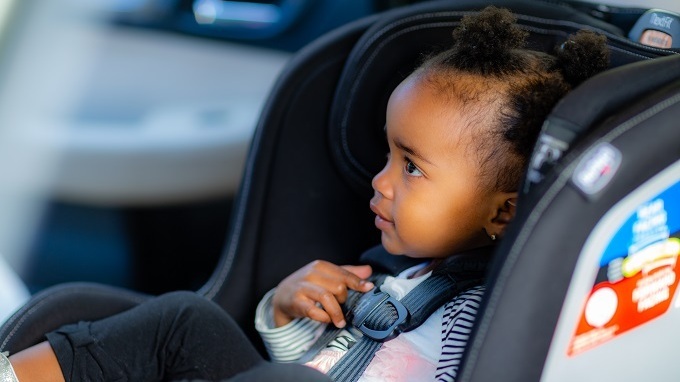Research In Action
Research In Action
Breadcrumb

It has been encouraging to see the national attention given to optimal child restraint practices during National Child Passenger Safety Week. Although it is crucial to bring awareness of this issue to parents and caregivers, it is also important to consider the groups who deliver these messages to parents.
One key stakeholder group that parents often rely on for accurate information and advice is pediatricians. However, in the years following the 2011 release of American Academy of Pediatrics’ (AAP) updated policy statement on CPS, I wondered if pediatricians knew of and promoted these best practice recommendations. In recent CHOP research published in The Journal of Pediatrics, my colleagues and I sought to gain insight into the awareness, attitudes, and dissemination practices of pediatricians two years following the release of the revised policy statement.
Survey Results
We distributed an electronic survey to pediatric primary care physicians through the AAP and received over 500 responses. In general, CPS knowledge was high, as over 50% of the pediatricians surveyed answered all six CPS knowledge and scenario-based questions correctly. However, the results also revealed important gaps in knowledge. Perhaps most noteworthy was that almost 10% of the respondents did not know the recommended age and/or conditions at which a child should be transitioned from a rear-facing child restraint system (CRS) to a forward-facing CRS. This was the most significant and highly publicized change to the AAP’s latest recommendations.
Additionally, nearly 40% of respondents did not know the age at which children may ride in the front seat (age 13). This is significant as previous research has shown an elevated risk of injury ranging from 40 to 70% for children in the front seat as compared with children seated in the rear.¹
Pediatricians also reported that they were more likely to have addressed CPS during routine health supervision visits for younger children (birth to 2 years) than older children (4-12 years). Children of booster seat age are a particularly vulnerable population, as CHOP research has shown that the use of belt-positioning booster seats lowers the risk of injury to children aged 4-8 years by 45% compared with the use of seat belts alone², yet many children are still “prematurely graduated” to vehicle seat belts.
Increasing Awareness of CPS Best Practices
The survey responses revealed that awareness of the recommendations is key—increased knowledge about CPS best practice recommendations was associated with increased confidence among pediatricians and likelihood of discussing the topic with patients’ families. Insufficient time and resources were reported as barriers to regularly providing CPS information to their patients, but respondents also acknowledged that they have a significant influence on their patients’ safety through CPS education. Pediatricians should be encouraged to incorporate CPS into every well-child visit.
For recommendations on how to make CPS part of the conversation, click here to view a Medscape.com podcast for pediatricians.
1. Arbogast KA, Durbin DR, Zonfrillo MR, Myers RK, McGinley AD. CPS Issue Report: Optimizing the Rear Seat for Children. The Children’s Hospital of Philadelphia Research Report, April 2013.
2. Arbogast KB, Jermakian JS, Kallan MJ, Durbin DR. Effectiveness of Belt Positioning Booster Seats: An updated assessment. Pediatrics, 2009;124;1281–6.




